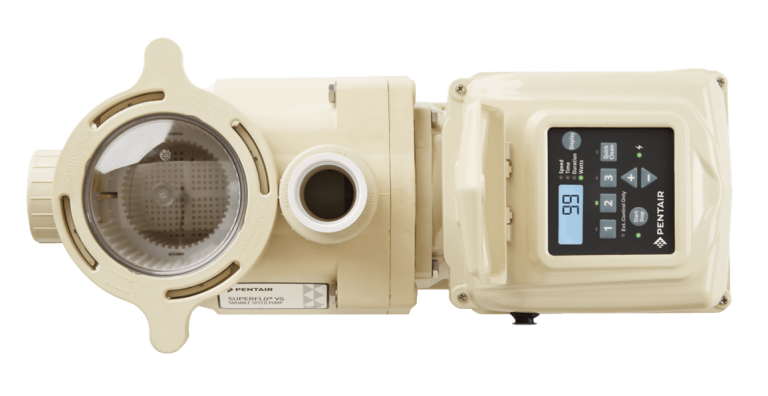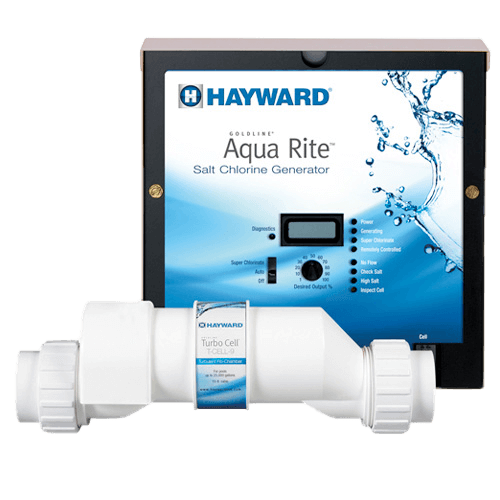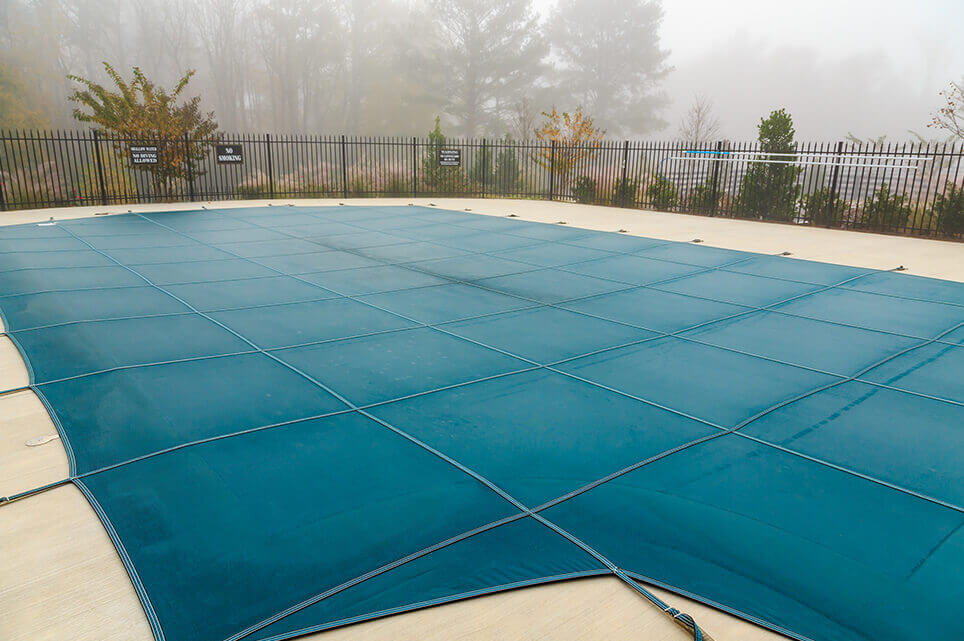
Save $442 by switching to a Variable Speed Pump – average per season, using a pump with low energy consumption.

A. Variable Speed Pump operates at lower speeds than typical single speed pool pump. As a result it consumes less electricity, similar to saving gas by driving slower. The faster you drive, the more fuel you burn because of increased drag. Similarly, the faster you move water, the more resistance is created, which translates into high electrical consumption.
B. The most common 1HP single pool pump consumes on average 1.75 kWh. Running that pump 24 hours a day results in 42 kWh power consumption a day. Multiply that by 30 days and your single speed pump consumes 1260 kWh a month. The average pool is open 5 months in the season which translates into 6300 kWh. At the average cost of 8.2 cents (1) per kWh 1HP single speed pump, it will cost $516 to operate each season.
C. If replaced with Pentair Superflo Variable Speed Pump your pump will consume on average 0.5 kWh (2). Because of the built-in timer, your new pump will run only 12 hours a day which results in 6 kWh power consumption a day. Multiply that by 30 days and your Pentair Superflo VS Pump consumes 180 kWh a month. The average pool is open 5 months in the season which translates into 900 kWh. At the average cost of 8.2 cents (1) per kWh Pentair Superflo Variable Speed Pump costs $74 to operate each season.
D. By switching to Variable Speed Pump you will save $442 a season on average.
E. Many municipal hydro companies are offering financial
incentives for switching over to a Variable Speed Pump.
Save $340 by converting your pool to a salt water pool.

A. Salt water chlorination is a process that uses dissolved salt in your pool to produce chlorine. The chlorine generator is installed in the pool equipment area. The chlorine generator uses electrolysis in the presence of dissolved salt to produce chlorine. In other words, a salt water system produces chlorine from salt in your pool water. It repeats this process over and over once the salt level has been stabilized at the beginning of the season.
B. The average Canadian chlorine pool 16’x32’ (25k Us Gallon) costs $460 in Chlorine Pucks and Chlorine Shock (3) each season.
C. The same pool converted to salt water use on average 10 bags of salt a season which costs $120 each season with no extra chlorine necessary (4).
D. Converting your pool to salt water saves $340 each season on average.
Save $98 by installing a safety cover to protect your pool over the winter.

A. Apart from traditional advantages of safety covers like the neat look and safety, many people do not realize the environmental and economical advantages that go along with it. A typical safety cover is manufactured from a mesh material that blocks UV light and debris, but allows water to sift through. During pool closure in the fall, the pool is drained to allow for proper pipe winterizing. Over the winter, rain water and melted snow accumulates – this water is reused in the pool during the spring opening, eliminating the need to fill the pool, completely with new water.
B. The average Canadian pool 16’x32’ and is drained of 18” of water during a pool closing. That is 5750 US Gallons. With a tarp or fitted cover, all water has to be replenished with a pool opening – this costs $98 (5) every year. With a safety cover, this expense is eliminated.
Other important tips to reduce the cost of your swimming pool.
1) Sign up for weekly service. The biggest advantage in having weekly service, is taking the burden off you, in terms of cleaning and maintaining your pool. As well, professional, repetitive weekly service, and chemical balance will also reduce the cost of chemicals by keeping bacteria always in check and fixing any possible outbreaks early, before the unnecessary expense of costly chemicals. Proper pool chemistry is essential to extend the life of your pool equipment and to preserve your pool surface.
2) If you suspect a leak, call us immediately and one of our crew will perform a professional leak detection. If a leak is found, we will repair the issue on the spot. A 16’x32’ pool that leaks 1 inch of water per day is equivalent to 320 US Gallons, or $5.44 a day, and $163.20 a month. It is imperative that leaks are detected quickly to avoid extra costs in lost water.
3) Keep your pool temperature at 84F maximum. Remember, pools are for swimming and playing, not for soaking. Monthly heating costs for a temperature between 90F and 84F, can be as much as $300 every month, plus the increased cost of chemicals, due to the need for more sanitizer.
NOTES:
(1) Based on Toronto Hydro pricing (On-Peak 13.2 C per Kwh, Mid-Peak 9.4 C per Kwh, Off-Peak 6.5 C per Kwh) with 18% On-Peak week time, 18% Mid-Peak week time and 64% Low-Peak week time.
(2) Based on 2250 RPM average Wattage of 650W and 1800 RPM average wattage 350W.
(3) Based on 250 litres of liquid chlorine and 18 KG of Pool Pucks used over a 5 month pool season.
(4) Based on 1 bag costing $12.
(5) Based on City of Toronto $0.017/gal. water rate.